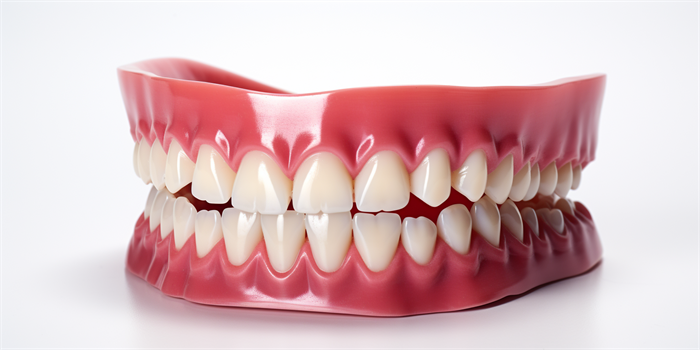Choosing the right orthodontic treatment can be a life-changing decision. For many individuals looking to achieve a straighter smile, ceramic braces have become a popular choice. With their discreet appearance and effective results, these braces are highly sought after. However, it's essential to understand the associated costs before committing to the treatment. In this article, we will take a transparent look at ceramic braces prices, helping you make an informed decision about your orthodontic journey.

1. Understanding Ceramic Braces
Ceramic braces are orthodontic appliances that consist of clear or tooth-colored brackets, making them less noticeable than traditional metal braces. These brackets are crafted from ceramic or composite materials, blending naturally with your teeth. It's important to note that ceramic braces work similarly to metal braces, applying gentle pressure to shift your teeth into the desired position.
2. Factors Influencing the Cost
- Type of braces: Ceramic braces are generally more expensive than metal braces due to the material used.
- Complexity of the case: The severity and complexity of your dental misalignment can impact the overall cost of treatment.
- Orthodontic expertise: The experience and reputation of the orthodontist or dental clinic may affect the pricing.
- Additional treatments: Additional procedures such as tooth extractions or jaw surgery, if required, can increase the overall cost.
3. Average Cost of Ceramic Braces
The average cost of ceramic braces can vary widely depending on the factors mentioned above and your geographic location. On average, you can expect to pay between $3,000 to $8,000 for a full treatment with ceramic braces. Remember, this cost is usually inclusive of the orthodontic consultations, X-rays, braces placement, adjustments, and retention devices.
4. Insurance Coverage
Some dental insurance plans provide coverage for orthodontic treatments, including ceramic braces. However, it's crucial to review your policy carefully and understand the limitations, deductible amounts, and annual maximums. Contact your insurance provider to determine the extent of coverage for ceramic braces, as well as any associated paperwork or pre-authorization requirements.
5. Financing Options
If the cost of ceramic braces exceeds your budget, several financing options are available to make orthodontic treatment more affordable. Some orthodontic clinics offer in-house payment plans, allowing you to spread the cost over a predetermined period. Additionally, third-party financing companies can provide flexible payment plans with low or no interest options.
6. Research and Compare
When considering ceramic braces, it's essential to research multiple orthodontists or dental clinics in your area. Request comprehensive treatment plans, including a breakdown of costs, to make an informed comparison. Remember, the cheapest option may not always be the best, so prioritize the experience and expertise of the orthodontist.
7. Taking Care of Ceramic Braces
Proper maintenance and care of ceramic braces can help prevent unnecessary replacements or repairs, potentially saving you money. Follow the orthodontist's instructions regarding oral hygiene, dietary restrictions, and proper use of orthodontic tools.
8. Length of Treatment
The duration of your ceramic braces treatment will depend on the complexity of your case and your individual progress. On average, treatment with ceramic braces can range from 12 to 24 months. It's important to consider this factor when evaluating the total cost.
9. Retention Phase
After your braces are removed, a retention phase begins to ensure your teeth remain in their new positions. Typically, this phase involves using a retainer. The cost of retainers may or may not be included in the initial treatment estimate, so be sure to inquire about any additional expenses.
10. Consultation with an Orthodontist
To receive an accurate estimate of the total cost of ceramic braces, schedule a consultation with an experienced orthodontist. They will examine your teeth, assess your orthodontic needs, and provide a personalized treatment plan along with a detailed cost breakdown.
Frequently Asked Questions
Q: Are ceramic braces more expensive than metal braces?
A: Yes, due to the materials used, ceramic braces are generally more expensive than traditional metal braces.
Q: Can insurance cover the cost of ceramic braces?
A: Some dental insurance plans provide coverage for orthodontic treatments, including ceramic braces. Contact your insurance provider for further information.
Q: What financing options are available for ceramic braces?
A: In-house payment plans offered by orthodontic clinics and third-party financing companies are popular options for financing ceramic braces.
Q: How long does treatment with ceramic braces typically last?
A: The average duration of treatment with ceramic braces can range from 12 to 24 months, depending on the complexity of the case.
Q: What happens after the braces are removed?
A: After braces are removed, a retention phase begins, usually involving the use of retainers to maintain the position of your teeth. Be sure to inquire about any additional costs associated with this phase.
References:
- Journal of Clinical Orthodontics; Volume 35, Issue 11; Pages 685-692;
- American Association of Orthodontists; Orthodontic Treatment Options.





